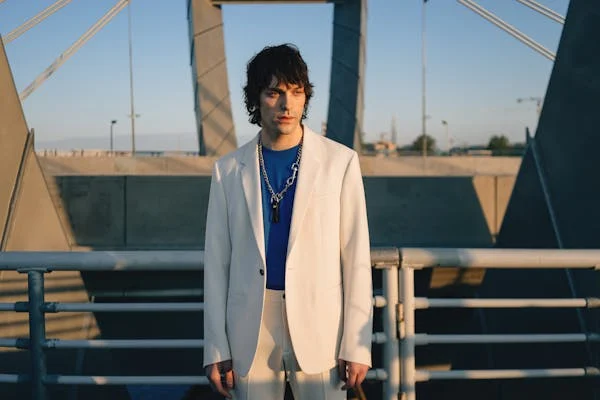H1: Introduction
In the ever-evolving world of fashion, street style has become an undeniable force reshaping the industry. What started as a subculture has now firmly planted itself at the forefront of global fashion. The rise of street style is not just a trend; it’s a cultural shift, reflecting the modern-day blend of comfort, individuality, and self-expression. But how exactly has street style transformed the fashion landscape? Let’s dive in.
H2: What is Street Style?
Street style refers to the casual, often edgy fashion choices seen on the streets rather than on the runway. It’s raw, organic, and reflective of the everyday person’s unique aesthetic. Over the years, what was once considered an underground movement has now become a mainstay in the fashion world. From the gritty streets of New York to the fashionable corners of Tokyo, street style is as diverse as the cities it originates from.
H2: The Influence of Social Media on Street Style
Social media has played a massive role in propelling street style into the limelight. Platforms like Instagram and TikTok have allowed people from all over the world to showcase their fashion choices instantly. Gone are the days when fashion was dictated by the few elite designers and models. Now, anyone with a smartphone can influence what’s “in” and what’s “out.”
H3: Social Media as a Global Stage for Street Style
Thanks to social media, street style has transcended geographic boundaries. What may have started as a localized fashion statement can now become a global trend overnight. A simple photo posted on Instagram from a street in Paris can inspire fashion lovers in Mumbai, Sao Paulo, or Los Angeles to adopt similar looks.
H3: How Influencers Are Shaping the Narrative
Influencers have been instrumental in this transformation. Fashion influencers and street style bloggers have become the new faces of fashion, dictating trends with their personal style rather than conforming to the conventional standards of high fashion. They act as tastemakers, showing the world that style isn’t about price tags, but about creativity and expression.
H2: Street Style and High Fashion Collaboration
One of the most significant developments in the fashion industry has been the merging of street style with high fashion. Once seen as opposites, streetwear and luxury fashion brands are now collaborating more than ever before. Brands like Louis Vuitton, Gucci, and Balenciaga have all embraced street style elements in their collections, showing the world that high fashion is willing to evolve.
H3: The Role of Fashion Weeks in Street Style’s Rise
Fashion weeks, once solely about showcasing runway collections, have now become a hotspot for street style photographers. The streets surrounding the events are just as important as the catwalk itself. Street style photographers capture the looks of the influencers, celebrities, and everyday people attending these events, highlighting the organic, authentic side of fashion.
H3: Streetwear vs. Haute Couture: Where Do They Meet?
The intersection between streetwear and haute couture is one of the most exciting aspects of modern fashion. Collaborations like Supreme x Louis Vuitton and Off-White x Nike blur the lines between casual wear and luxury, creating a new standard where comfort and exclusivity coexist.
H2: How Street Style is Democratizing Fashion
One of the most exciting aspects of street style is how it democratizes fashion. Street style is about more than just expensive designer clothes—it’s about creativity and individual expression. No longer is fashion reserved for the elite; it’s for everyone. Whether you shop at thrift stores or high-end boutiques, street style encourages you to mix and match and create a look that feels true to yourself.

H3: The Role of Gender Fluidity in Street Style
Street style also embraces gender fluidity, breaking away from the traditional norms of fashion. Designers and street style icons alike are challenging the binary views of masculinity and femininity, showcasing that style isn’t confined by gender. Non-binary clothing and genderless fashion are becoming more prevalent in street style, allowing everyone to express themselves authentically.
H3: Street Style’s Impact on Sustainable Fashion
Another key feature of street style is its influence on sustainable fashion. The rise of thrift shopping, second-hand stores, and upcycled clothing is strongly rooted in street style. This movement encourages people to rethink how they consume fashion, pushing for a more sustainable, circular approach to clothing.
H2: Key Elements of Street Style
Street style is all about comfort, individuality, and self-expression. Key elements often include casual pieces like oversized jackets, sneakers, graphic tees, and vintage items. The key is to make the outfit feel personal—whether it’s through bold accessories, unique combinations, or subtle details that reflect the wearer’s personality.
H3: The Influence of Youth Culture on Street Style
Youth culture has had a profound influence on street style. Young people today use fashion as a form of self-expression, rebellion, and identity. Street style is often a reflection of this desire for individuality, with young generations leading the charge in making bold fashion statements.
H3: Global Street Style Icons and Trendsetters
Street style icons like Rihanna, A$AP Rocky, and Zendaya have made huge impacts on the fashion world. These celebrities, along with influencers from various parts of the world, continue to shape what we consider fashionable. Additionally, regional differences in street style—like the minimalism of Scandinavian fashion or the eclecticism of Tokyo streetwear—show the global reach and diversity of street style.
H2: The Future of Street Style
The future of street style looks incredibly bright. As technology continues to evolve, we can expect even more influence from digital platforms. Virtual fashion shows, AI-driven trend forecasting, and the continued rise of e-commerce will likely shape the next wave of street style. One thing is clear: street style is here to stay, and it will continue to evolve with the times.
H1: Conclusion
Street style has transformed from a niche subculture into a driving force in the fashion industry. It’s no longer just about clothing; it’s about creativity, inclusivity, and self-expression. From its roots in underground fashion to its prominence in high fashion collaborations, street style is shaping the future of how we view and consume fashion. The evolution of street style isn’t just a trend—it’s a revolution.
H2: FAQs
Q1: What are the key components of street style?
Street style is defined by casual, comfortable clothing mixed with personal flair. Common items include oversized jackets, sneakers, graphic tees, and unique accessories.
Q2: How has social media impacted street style?
Social media has amplified the reach of street style, allowing individuals from across the globe to showcase their personal fashion and influence trends instantly.
Q3: Is street style the future of high fashion?
Yes, street style has already begun merging with high fashion, with collaborations between streetwear brands and luxury labels becoming increasingly common.
Q4: How can I incorporate street style into my wardrobe?
To incorporate street style into your wardrobe, focus on mixing comfort with individuality. Choose items like sneakers, graphic tees, vintage finds, and accessories that reflect your unique style.
Q5: What role does sustainability play in street style?
Sustainability is a key aspect of street style, with an emphasis on second-hand shopping, upcycling, and conscious consumption, making it one of the most eco-friendly fashion movements.

